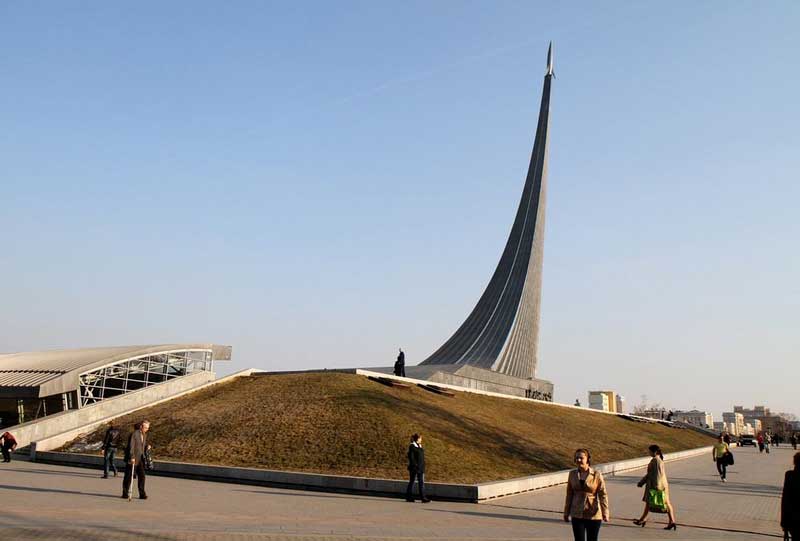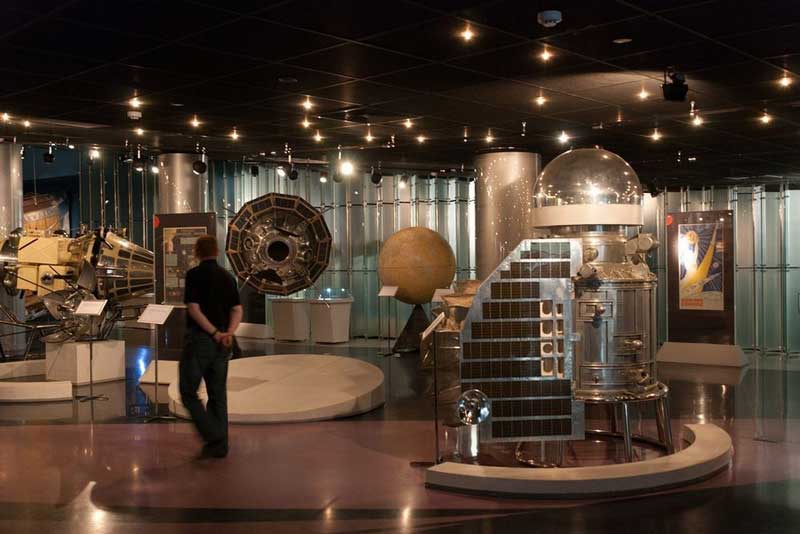
The Monument to the Conquerors of Space was erected in Moscow in 1964 to celebrate cosmonaut Yuri Gargarin’s successful attempt to orbit the Earth in 1961 and the achievements of the Soviet Union in space exploration. In fact, the Soviet rulers were keen to highlight their supremacy in outer space and planned to erect an obelisk commemorating their space dominance just months after they launched the first artificial satellite of earth, Sputnik 1, in 1957, which opened a new chapter in the history of mankind. Accordingly, a competition was announced for the best design of an obelisk and out of some 350 proposals, the design by sculptor A.P. Faidysh-Krandievsky and architects A N Kolchin and M O Barshch was chosen.


The 350 feet (100 m) monument is a large obelisk topped by a rocket and resembling the shape of the exhaust plume of the rocket. It leans on to one side at an angle of 77° and is covered with titanium cladding. Titanium is a metal of high tensile strength and high resistance to corrosion and many critically structural parts of spaceships are made of alloy of this very metal. The tall monument can be seen from a long distance, as it rises up above the trees and buildings that surround it. The major part of the sculpture is actually made up of the rocket’s trail, which gives an impression of just how powerful these machines could be.
A statue of Konstantin Tsiolkovsky, one of the pioneers of the astronautic theory, is located in front of the obelisk. Along with the American scientist Robert H. Goddard and the German scientist Hermann Oberth, he is considered to be one of the founding fathers of rocketry and astronautics. The base of the monument is inscribed with a poem in Russian and both sides of the base of the monument is decorated with bas-reliefs depicting the men and women of the space program, including Valentina Tereshkova, the first woman to have flown in space as the pilot of Vostok 6, on 16 June 1963 and Laika, the first space dog.



Located in the northeastern part of Moscow, outside the main entry to the All-Russia Exhibition Centre, formerly known as the Exhibition of Achievements of the National Economy, the Monument to the Conquerors of Space was opened on October 4, 1964, on the day of the 7th anniversary of the Sputnik 1 launch. Originally, a museum was also designed to be accommodated in the base of the monument. However, the memorial museum did not exist for another seventeen years.
The interactive Memorial Museum of Cosmonautics, chronicling Russia’s journey into the unknown, was opened on 10 April 2009, to commemorate the 20th anniversary of Yuri Gagarin's historic flight. The museum contains numbers of space-related exhibits and models which explain the history of space exploration, space technology and astronomy. Along with many other exhibits, it contains the historic space capsule used by Yuri Gagarin and also a lunar rover or moon rover from the 1970s Lunokhod missions.


The path leading up to the monument, known as the Cosmonauts Alley, is lined with busts of the Soviet cosmonauts and other important figures in the Soviet space program. There are several other monuments in the area, which include among others, a globe the universe, a globe of the Earth, and a model of the solar system.